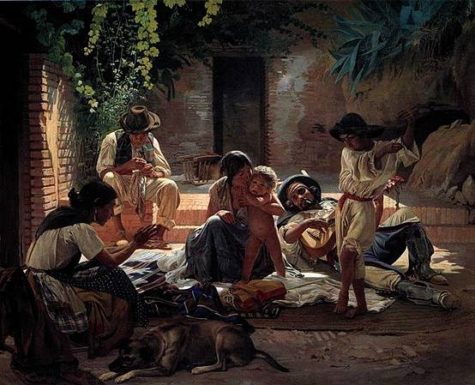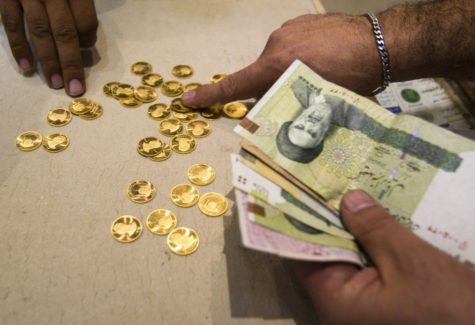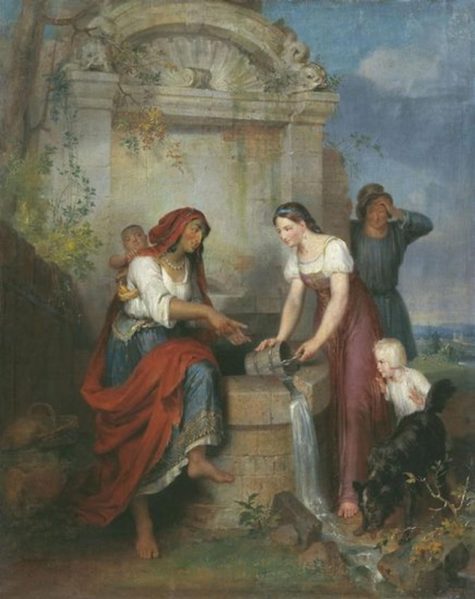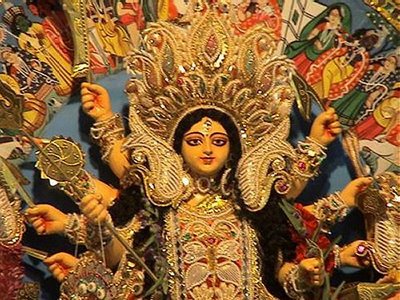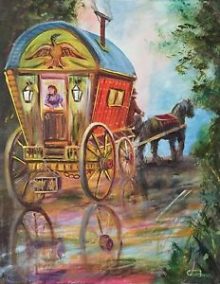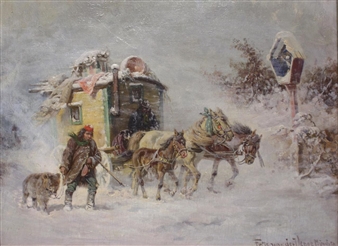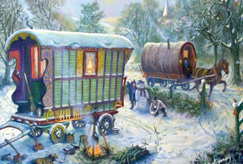Monthly Archives: October 2016
The Historical Gypsy
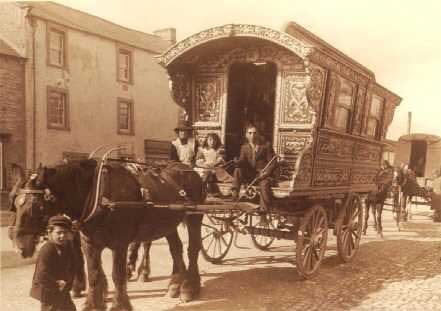 The first gypsies claimed to be the Christian nobility of Egypt, who had abandoned their possessions in order to retain their faith when the Muslims gained power. They were believed for a good period.
The first gypsies claimed to be the Christian nobility of Egypt, who had abandoned their possessions in order to retain their faith when the Muslims gained power. They were believed for a good period.
However, linguistic evidence strongly demonstrates that they actually originated in India, and moved west, migrating through the middle east into Europe. Although the Gypsies call themselves ‘Rom’ and their language is known as’Romani’, the Romani language has nothing in common with the language known as Romanian (which is a Romance language, derived from Latin and kin to French, Spanish, Italian, etc.). Romanibeen shown to be closely related to groups of languages and dialects (such as Hindi, Gujarati, Marathi and Cashmiri) still spoken in India and of the same origin as Sanskrit.
They were often described as dark-skinned magicians, entertainers, smiths, horsebreakers and other skilled tradeworkers. There is a good possibility that they originated belly dancing.
They lived in tents. Ggypsy wagons are a recent introduction. The wagons date from the late 18th early 19th century. Before that, they travelled by foot and horseback, setting up tents by night. The classic gypsy caravan wagons were usually built by commercial carriage shops for the gypsies, since they took a lot of woodworking and other equipment.
Reliable period info on gypsies is sadly lacking- the only people writing about them were the ones who wanted rid of them at all cost. I think it was in the fifteenth century that the pogroms against them really got rolling…Because gypsies have remained very secluded and secretive, cultural “tainting” has been comparatively low, and modern practices may well reflect medieval practices.
In France it was thought that these same people came from Bohemia and thus they were called ‘Bohemes’…. [thus began the English word “bohemian”]. There are Elizabethan laws against dressing or acting “as an Egyptian,” which from the descriptions seem to be what we would call ‘gypsies.’ It is quite possible that the word “gypsy” came into use as an abreviation of “Egyptian” somewhat later than the actual arrival of the Rom in England.
The Romnichels, or Rom’nies, began to come to the United States from England in 1850. Their arrival coincided with an increase in the demand for draft horses in agriculture and then in urban transportation. Many Romnichels worked as horse traders, both in the travel-intensive acquisition of stock and in long-term urban sales stable enterprise. After the rapid decline in the horse trade following the First World War, most Romnichels relied on previously secondary enterprises, “basket-making,” including the manufacture and sale of rustic furniture, and fortune telling.
The Rom arrived in the United States and Canada from Serbia, Russia and Austria-Hungary beginning in the 1880s, as part of the larger wave of immigration from southern and eastern Europe in the late 19th and early 20th centuries. Primary immigration ended, for the most part, in 1914, with the beginning of the First World War and subsequent tightening of immigration restrictions. Many in this group specialized in coppersmith work, mainly the repair and refining of industrial equipment used in bakeries, laundries, confectioneries and other businesses. The Rom, too, developed the fortune-telling business in urban areas.
The Ludar, or “Rumanian Gypsies,” emigrated to North America during the great immigration from southern and eastern Europe between 1880 and 1914. Most of the Ludar came from northwestern Bosnia. Upon their arrival in North America they specialized as animal trainers and show people, and indeed passenger manifests show bears and monkeys as a major part of their baggage. Only a handful of items covering this group have been published, beginning in 1902. The ethnic language of the Ludar is a form of Romanian. They are occasionally referred to as Ursari in the literature.
Gypsies from Germany, generally referred to in the literature as Chikeners (Pennsylvania German, from German Zigeuner), sometimes refer to themselves as “Black Dutch.” (While the term “Black Dutch” has been adopted by these German Gypsies, it does not originate with this group and has been used ambiguously to refer to several non-Gypsy populations.) They are few in number and claim to have largely assimilated to Romnichel culture. In the past known as horse traders and basket makers, some continue to provide baskets to US Amish and Mennonite communities. The literature on this group is very sparse and unreliable.
The Hungarian (or Hungarian-Slovak) musicians also came to this country with the eastern European immigration. In the United States they continued as musicians to the Hungarian and Slovak immigrant settlements, and count the musical tradition as a basic cultural element.
The Irish Travelers immigrated, like the Romnichels, from the mid to late nineteenth century. The Irish Travelers specialized in the horse and mule trade, as well as in itinerant sales of goods and services; the latter gained in importance after the demise of the horse and mule trade. The literature also refers to this group as Irish Traders or, sometimes, Tinkers. Their ethnic language is referred to in the literature as Irish Traveler Cant.
The present population of Scottish Travelers in North America also dates from about 1850, although the 18th-century transportation records appear to refer to this group. Unlike that of the other groups, Scottish Traveler immigration has been continuous. Also unlike the other groups, Scottish Travelers have continued to travel between Scotland and North America, as well as between Canada and the United States, after immigration. Scottish Travelers also engaged in horse trading, but since the first quarter of the 20th century have specialized in itinerant sales and services.
Much of this information came from the Gypsy Lore Society.
Meet With Success
 This is a “commanding” spell and will place you on the threshold of success. It may also be used to increase your personal power before an important meeting.
This is a “commanding” spell and will place you on the threshold of success. It may also be used to increase your personal power before an important meeting.
Have in your mind a clear idea of what it is that you want to succeed with. Light a blue candle in front of a mirror. Sit at the mirror and stare into your own eyes in search of your soul. Ask for a circle of gold light to be placed around you for protection and a circle of blue light to be placed around you for healing. Repeat your Christian name (or names) twenty-one times. Then speak your wish and repeat it twenty-one times. Blow out the candle and await success.
From: The Good Spell Book
Gypsy Names
Each gypsy had three names:
The first was a secret name whispered into the baby’s ear shortly after birth and again when the child reached puberty but never spoken aloud at any other time and never told to anyone else.
The second was a gypsy name, used between gypsies only.
The third was a local name, usually chosen to reflect the general names being given to non-gypsies in the country where the gypsy resided. This was the name the gypsy was to use publicly,with a gadje (non-gypsy), or for on official documents.
Popular Gypsy Names
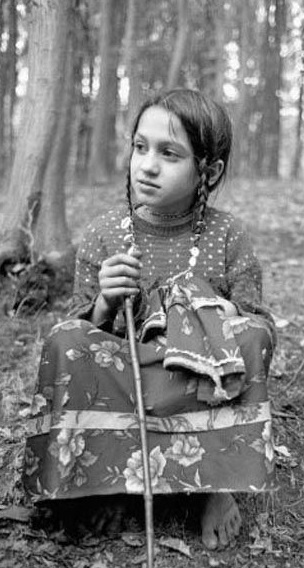 Popular Gypsy Names – Feminine
Popular Gypsy Names – Feminine
- Anelka, Anuaka, Armanka, Anselina, Athalia,
- Babina, Bayana, Belka, Bena, Bica, Bilya, Bina, Binuca, Birka, Bizuca, Bota, Botana, Boyala, Bresa, Briya, Buna, Burgulya, Britannia
- Cini, Cora, Cura, Camba, Cernyavka, Cilyana, Cilyanka, Cinderella, Clementina
- Dana, Danira, Darka, Dena, Diamanta, Diduka, Dika, Dilinka, Dina, Domka, Donya, Draga, Duda, Dudarka, Dulca, Dundya, Dyana, Dyolbana, Dyombala, Dyula, Dotia
- Feastra, Fairnette, Freedom
- Gana, Gafa, Gafica, Gaftona, Grinza, Guda, Gentilia
- Kali, Kapica, Kata, Katarina, Kati, Keza, Kica, Kokana, Kolombina, Krizma, Krizmarica, Kruca, Kumbriya, Kuna
- Lina, Loli, Loyzi, Loza, Luga, Lukreciya, Lula, Luludi, Luna, Lutka, Luska, Luza, Lyalya, Lyanka, Lyuka,
- Madoka, Mala, Malaska, Malika, Malyoxa, Mandica, Manevra, Mara, Marca, Mardyola, Marga, Margayka, Margoska, Maruca, Marulya, Matora, Matryona, Matuska, Mileva, Mina, Miyula, Mica, Morana, Mugulya, Murzatka, Muyara, Mentanya, Meriya, Mizelli
- Nataliya
- Ocean
- Papin, Papina, Papus, Paralya, Parastiva, Patrina, Pavia, Pavlena, Persi, Pika, Pitoc, Piyada, Pucuranka, Puna, Pupi, Putya, Peperuga, Persuda, Pevuna, Phabay,
- Rayka, Roseriya, Rufa, Rupinka, Rupla, Ruza, Reservoir
- Sabina, Saveta, Sima, Sofa, Solomiya, Sonya, Staya, Stura, Senuca, Sana, Seryadya, Seyica, Sinfai
- Taliya, Terenka, Tereza, Terka, Teza, Tinka,
- Unity
- Vandya, Vena, Vota, Volya, Volyana, Voronka, Voronsana, Vorza, Vorzana, Vorzank, Vancy
- Xilya, Xilyka,
- Yana, Yeva, Yela, Yelena, Yordana, Yoza, Yula, Yulyca,
- Zaga, Zamba, Zambila, Zamfira, Zana, Zanda, Zizya, Zofinya, Zolfina, Zorpina, Zuzana, Zuzi, Zuzulya, Zofi, Zoska, Zuza
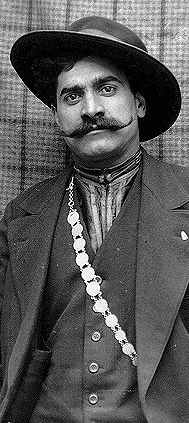 Popular Gypsy Names -Masculine
Popular Gypsy Names -Masculine
- Amberline
- Belcher
- Brishen Baul, Bavol, Bersh, Beval, Bidshika,Brishen
- Camlo, Chik, Cam, Chaine, Chal, Chavula, Clopin
- Danior, Dukker, Durriken, Durril, Dangerfield
- Elijah,
- Garridan Gillie, Guibran, Goliath, Gilderoy
- Hezekiah
- Jal, Javert, Jibben, Jivin
- Ker
- Lel, Lennor, Lendar, Lensar, Liberty
- Mander, Merripen, Mestipen, Major
- Nehemiah, Noah, Nelson, Neptune
- Pal, Pattin, Pias, Pov
- Rye
- Stiggur, Sampson, Shadrack, Silvanus
- Tas, Tobar, Tobbar, Tawno, Tem, Terkari
- Vandlo
- Wen, Wesh
- Yarb
Sources: This post was compiled by Shirley Twofeathers for Gypsy Magic, you may repost and share it only if you give me credit and a link back to this website. Blessed be.
Another Old Gypsy Trick
The Gypsy has some queer, old-fashioned gold piece; this she takes to some goldsmith’s shop, at the window of which she has observed a basin full of old gold coins, and shows it to the goldsmith, asking him if he will purchase it. He looks at it attentively, and sees that it is of very pure gold; whereupon he says that he has no particular objection to buy it; but that as it is very old it is not of much value, and that he has several like it.
“Have you indeed, Master?” says the Gypsy; “then pray show them to me, and I will buy them; for, to tell you the truth, I would rather buy than sell pieces like this, for I have a great respect for them, and know their value: give me back my coin, and I will compare any you have with it.”
The goldsmith gives her back her coin, takes his basin of gold from the window, and places it on the counter. The Gypsy puts down her head, and pries into the basin. “Ah, I see nothing here like my coin,” says she. “Now, Master, to oblige me, take out a handful of the coins and lay them on the counter; I am a poor, honest woman, Master, and do not wish to put my hand into your basin. Oh! if I could find one coin like my own, I would give much money for it; barributer than it is worth.”
The goldsmith, to oblige the poor, simple, foreign creature (for such he believes her to be), and, with a considerable hope of profit, takes a handful of coins from the basin and puts them upon the counter.
“I fear there is none here like mine, Master,” says the Gypsy, moving the coins rapidly with the tips of her fingers. “No, no, there is not one here like mine – kek yeck, kek yeck – not one, not one. Stay, stay! What’s this, what’s this? So se cavo, so se cavo? Oh, here is one like mine; or if not quite like, like enough to suit me. Now, Master, what will you take for this coin?”
The goldsmith looks at it, and names a price considerably above the value; whereupon she says: “Now, Master, I will deal fairly with you: you have not asked me the full value of the coin by three three-groats, three-groats, three-groats; by trin tringurushis, tringurushis, tringurushis. So here’s the money you asked, Master, and three three-groats, three shillings, besides. God bless you, Master! You would have cheated yourself, but the poor woman would not let you; for though she is poor she is honest”: and thus she takes her leave, leaving the goldsmith very well satisfied with his customer – with little reason, however, for out of about twenty coins which he laid on the counter she had filched at least three, which her brown nimble fingers, though they seemingly scarcely touched the gold, contrived to convey up her sleeves.
This kind of pilfering is called by the English Gypsies cauring, and by the Spanish ustilar pastesas, or stealing with the fingers. The word caur seems to be connected with the English cower, and the Hebrew kãra, a word of frequent occurrence in the historical part of the Old Testament, and signifying to bend, stoop down, incurvare.
From: Romano Lavo-Lil
An Old Gypsy Trick
The Gypsy makes some poor simpleton of a lady believe that if the latter puts her gold into her hands, and she makes it up into a parcel, and puts it between the lady’s feather-bed and mattress, it will at the end of a month be multiplied a hundredfold, provided the lady does not look at it during all that time. On receiving the money she makes it up into a brown paper parcel, which she seals with wax, turns herself repeatedly round, squints, and spits, and then puts between the feather-bed and mattress – not the parcel of gold, but one exactly like it, which she has prepared beforehand, containing old halfpence, farthings, and the like; then, after cautioning the lady by no means to undo the parcel before the stated time, she takes her departure singing to herself:
O dear me! O dear me!
What dinnelies these gorgies be.
The above artifice is called by the English Gypsies the hukni, and by the Spanish hokhano baro, or the great lie. Hukni and hokano were originally one and the same word; the root seems to be the Sanscrit huhanã, lie, trick, deceit.
From: Romano Lavo-Lil
Gypsy Prayer To The Virgin
The following short prayer to the Virgin, which I have frequently heard amongst the Gypsies of Hungary and Transylvania, will serve as a specimen of their language.
Gula Devla, da me saschipo. Swuntuna Devla, da me bacht t’aldaschis cari me jav; te ferin man, Devla, sila ta niapaschiata, chungale manuschendar, ke me jav ande drom ca hin man traba; ferin man, Devia; ma mek man Devla, ke manga man tre Devies-key.
Sweet Goddess, give me health. Holy Goddess, give me luck and grace wherever I go; and help me, Goddess, powerful and immaculate, from ugly men, that I may go in the road to the place I purpose: help me, Goddess; forsake me not, Goddess, for I pray for God’s sake.
From: The Zincali by George Barrow
